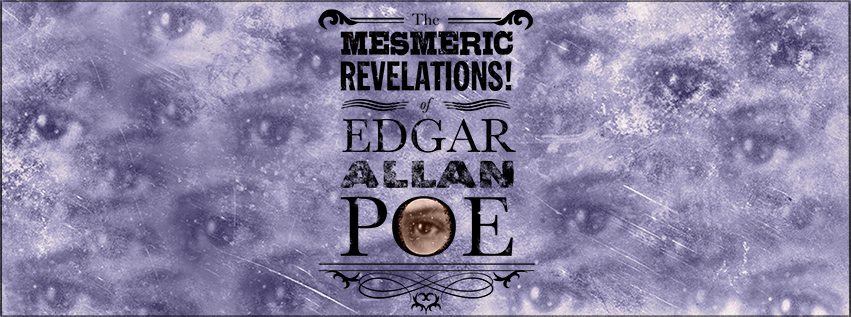Those who dream by day are cognizant of many things which escape those who dream only by night. A dream? A nightmare? A vision? A world trapped between worlds. Baltimore’s very own site-specific immersive experiential theatre show has returned to the Enoch Pratt House in time for the haunted Halloween season. Going inside the minds of the madness in a TheatreBloom exclusive interview, we sit down with Co-Directors and Co-Creators Glenn Ricci and Susan Stroupe to better understand The Mesmeric Revelations! of Edgar Allan Poe.
Thank you kindly for your time, we know it is difficult to escape the clutches of the house. Tell us, who are you?
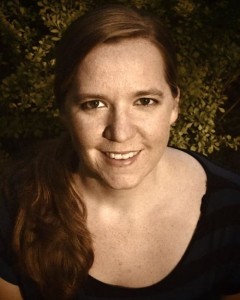
Susan Stroupe: My name is Susan Stroupe and I am the Co-Director of The Mesmeric Revelations! of Edgar Allan Poe. I was hired by Glenn Ricci, who is the show’s Producer and other Co-Director, along with Michele Minnick, who was our Movement Director during the first installment of this project and is now a full Co-Director this time around. We’ve chosen to go with three Co-Directors this time around because have a lot more actors this time, and they’re all in different places, so having more than one or two sets of eyes on them really helps focus the concepts of the show. Michele was very involved the first time so it was a very natural transition to move her up into a Co-Director positon.
Glenn Ricci: Hello, I’m Glenn Ricci.
How did this project come to fruition the first time around?
Susan: The Greater Baltimore Cultural Alliance has a grant that is only a few years old, it’s called The Rubies Grant. Glenn was part of the first group of people who received one of those grants. They are project-based grants. It’s not for development, it’s not for education, it’s for a very specific project. This was the project that he proposed. He wanted an immersive theatre experience based on something related to Edgar Allan Poe. Originally he had an idea of doing some reenactments of pieces, but then he wanted to make it a little bit more complicated. He wanted to explore the women in Poe’s life. What he had when we started was characters and some ideas for a few scenes. But there wasn’t much in the way of what the whole show was going to look like.
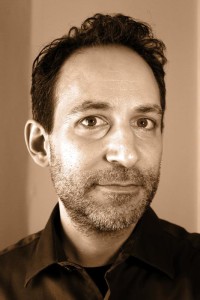
Glenn: I’d been going to other cities to see immersive shows and I was really liking them. I was wondering why they weren’t happening here. I forgot which one I had seen at the time, but one of my friends had said “Someone should do something like that for Poe.” And I said, “Yeah, sure.” But then I started thinking about it. I realized Poe would be a great backdrop and source of inspiration because he’s written so much and there’s just so much to choose from. Poe is also totally open source now. I had a handful of scenes in mind originally, and the characters sort of certain spaces that these characters could inhabit. I approached a lot of things through sound as well.
Speaking of spaces, how did you end up in the Enoch Pratt House at the Maryland Historical Society?
Susan: Happenstance and luck.
Glenn: We were very lucky. We were looking in the neighborhood, over here on the west side all through the Bromo Seltzer Arts District. We actually had a connection in PNC, Will Backstrom, who is one of these guys who doesn’t put his name on things he just makes connections. But he’s head of philanthropy over at PNC and has a lot of people’s ear. So he was at a board meeting for the Maryland Historical Society and they had said they were going to do a Poe themed ball. That sparked him to remember the conversation about this project. He took a personal interest in the project, I think he liked the urban renewal potential for it. We were really lucky to have made this connection.
So you lucked into the perfect venue, but when you mounted this performance originally back in March of this year— it was a limited engagement run with no clear future of running in perpetuity, how did that change?
Glenn: When the entire initial run sold out—
Susan: Six weeks before we even opened…
Glenn: We had put so much time and effort into building the experience— it was two or three U-Hauls filled with stuff to furnish the space. The manor house was completely empty. Striking it was a painful thought after just a six week run. We thought it was worth giving a shot to see it could carry on in the future. We managed to make it way more complicated and difficult than we could ever have imagined, but it’s working out and here we are.
How did you come up with the cast that you have currently? And how has that changed from the initial actors involved with the project?
Susan: We did not have auditions for the initial cast. It was Glenn meeting with Michele and I, and Michele had recommended some people. Then Glenn and his wife Ursula (Properties Master, Scenic Dresser and Co-Producer Ursula Marcum), who were not as familiar with the Baltimore Theatre Scene, went and saw tons and tons of plays and discovering actors that they liked. Michele and I had worked with people before and we had people that we thought would work good for something like this. It’s a different sort of auditioning process that you have when you’re looking to cast a devised immersive theatre piece. You’re looking for people who are not just good actors but are also extremely smart, ready to be creators on the spot as well as somewhat self-directed actors. We need people who have improv skills and good movement skills.
Glenn: They needed to have really good instincts.
How would you say, other than new casting, that this mount of the performance differs from the initial conception?
Susan: There are a lot of small ways. It’s essentially the same production with new cast— I should say there are a couple of new characters. Some of which are very secretive and some of which are more out in the open and that is all I’m going to say about that. I also need to clarify that this is not a remount in the sense that there is the original cast who does it some nights and then the “new cast” does it other nights. They’re all getting mixed together. Any given night that you attend you’ll see a different cast chosen from 16 different actors. Now, you’ll only get 9 characters in any one evening. There are eight named characters and one mysterious stranger. 16 actors total and you could encounter all of them in different way throughout.
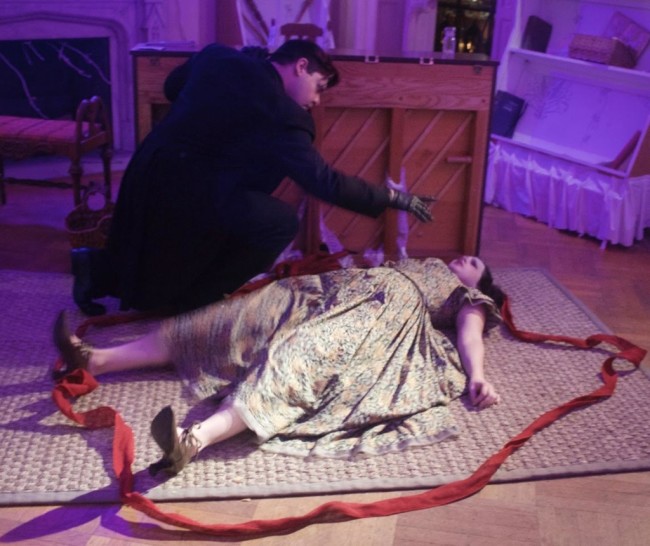
Because the original six characters came so much from the original six actors, they were developed out of them as people, the learning of these characters for the new actors has added this intense extra layer. You’re not only learning a character, you’re learning what came out of another person. So that creates the big question of how they make it a part of themselves, what of themselves goes into this character in addition to what came out of the original actors.
Glenn: And what different decisions they might make!
Susan: Right. What sort of different decisions are they making within the structure that we already have, it’s fascinating. I think the feeling of some of the characters are going to be different. One of the characters, The Barkeep, we’ve evolved the journey of that character a little more. You might want to follow The Barkeep a little bit more. You might not want to.
Glenn: We’ve actually created more interactions throughout as well. We’ve redevised some of the show. We wanted to see a little bit more interaction with the characters and the audience this time around. It’s not an extreme change, but there’s more to discover now. And there’s a little bit more to the way the characters interact with each other, new discoveries being made on that plane as well.
Susan: There are a few new one-on-one private space encounters. But like I said, essentially the same show but with new elements.
What were some of the challenges that you guys took on in attempting to continue this project, in addition to whatever challenges you addressed getting it created the first time around?
Susan: Casting was a big one. Not that we couldn’t find talented people, but it’s a lot to ask of somebody. It’s been a very intensive rehearsal process. We still have a few more days of rehearsal. We were asking people to learn something in six weeks that had previously taken actors eight months to create. You’re not just learning lines and blocking, you’re learning a human. You’re learning an experience. That’s been a pretty intensive process for them. I think we’ve struck gold again with these actors. I’m very happy with all the people that we have.
What is it that you think having an immersive installment piece of theatre like The Mesmeric Revelations! of Edgar Allan Poe as a potentially permanent fixture in the Baltimore area does for the Baltimore Theatre Scene and Baltimore Arts District?
Glenn: I can’t quite tell but there are certainly people who are coming to it from theatre and other art disciplines who are new to it and really turned on by it, and they’re getting ideas so that’s good. The first version I just wanted to put out there as a proof of concept, “look we can do this kind of thing here in Baltimore.” I mean, anybody who wants to talk to me about what it took to pull this thing off, I’ll talk their ear off about it. It turns out that things were a lot harder than we expected. It took a lot more work than we expected. On the one hand it’s doable, but on the other you really have to be prepared to do a lot of work.
Susan: There is a lot of different kinds of immersive theatre. I think Glenn was focused on the fact that there weren’t any big immersive shows around or happening in this city. There are a lot of people in the city already asking the question of what is the relationship between the audience and the performer. Like The Cook, The Thief, The Wife, and Her Lover, that Annex Theater produced last season. That took place in a restaurant. You were eating a dinner that was being served to you by the actors as the play was going on around you. That’s a different type of interaction and immersion.
Glenn: One of our new performers, Sarah Gretchen Heiderman (Eliza), was one of the directors of the production of Marat/Sade that Annex Theater did. That had an immersive feel to it. They forced the audience really close in for that one.
Susan: For this one, because we did not have a script to work with, it was devised and immersive, it’s two layers of intensity. Devised work is hard enough and then to have to make it something that is a lived-in experience…it takes time, it takes space, it takes money, and it takes so much more energy than just putting on a play.
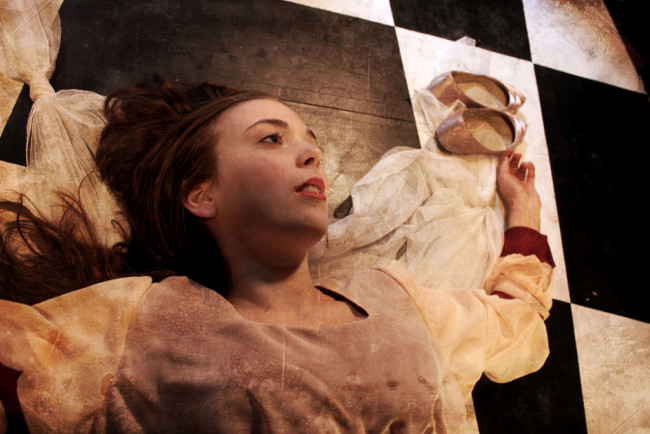
Glenn: I think the biggest thing about this work is that it’s explorable. It’s focused on audience discovery rather than a linear experience that has to unfold in a certain way. We geared it so that the audience can piece together and discover the stories that they experience. We want 26 people to come in, have 26 people with 26 different experiences and share them with each other. Once you give over to that, that you trust the audience to do that, you make many different decisions than you would for a single linear story.
Susan: For young theatre artists, theatre people in general, and especially theatre students who are coming to see this show, they’ll understand the creation of characters that have an emotionally similar structure, even if they have a different pathway. If you watch any of it you’ll get one big emotional arc even though it’s not linear. The way that all the characters were created is so different that you can see a character that is very present the whole time but only ever says three lines of text over two hours. That’s one way a character can be. Then you have a character who is talking all the time, a character who is improvising, a character whose primary motivation is not how we typically think of a character. A character must speak dialogue and must emote in a certain way. But all of these different styles of being a character are on display in this show. Audiences get to see all of the different ways you can be a character in one show and still tell a story without it all being the same.
How did you decide which Poe elements to focus on and incorporate into the project?
Susan: Some of it was by happenstance. Glenn had a desire to focus on some of the women in Poe’s life. That was already a slightly different take than what most people look at. And I’m putting words in your mouth, Glenn, so feel free to say otherwise, but he had this idea of wanting to do reenactments and then decided to do something different. It was already going to be a mixture of Poe’s writing and of Poe’s life. That sets it in a place to not have a linear storyline. Originally Poe was a character in the piece.
Glenn: Edgar.
Susan: Sorry, Edgar. Edgar was a character in the piece. Everybody goes by their first names because these characters are inspired by not exact replicas of. Through happenstance we lost the actor. Oh, that sounds like he crossed over. The actor had to leave due to all the many reasons that actors have to leave things. At that time Michele was doing this big intensive movement workshop with us, so when that happened, she proposed this radical idea. She said “What if Edgar’s not a character?” We ended up replacing the actor but we did not replace the character. We replaced the character with something that Tanner (playing V, Tanner Medding) had come up with. And Glenn had ideas of using the unreliable narrator there as well. I don’t want to say too much because I want people to come see the show and it still be mysterious.
What that ended up allowing us to do was to focus. During those few rehearsals where we had Edgar as a character, everything always came back to him. All of the movement, all of the improvisations, all of the dramaturgical work, everything always re-centered around him. One thing that Glenn was very passionate about from the beginning was that we were giving these other characters space to be main characters. But what we were finding in reality was that everything just kept zooming back in on Edgar.
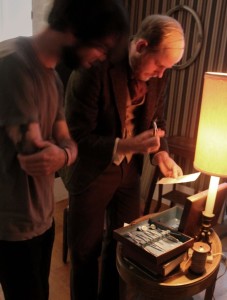
Glenn: I had always thought of Edgar as just another character like all the other characters. There is no lead character in the show. Whoever you follow becomes your lead character. But there is a serious flaw to that logic. If you’re going to go see a show with Edgar Allan Poe’s name in it, who are you going to follow?
Susan: When we made the decision the day that Michele proposed Edgar not be a character that instantly opened up all of these possibilities for what this could be about. It created all of these possibilities for pathways of these other characters.
Glenn: I thought everyone was going to be depressed because we’d lost someone in the production, I worried morale was going to be low. But they all just blossomed immediately.
Susan: I mean we missed the actor! It wasn’t losing the person! It was the fact that Edgar’s physical presence was taken away that really opened doors. That because part of the basis of what the show is. The fact that Edgar isn’t there.
Glenn: We’re all searching for him.
Susan: Happenstance at work to give us our huge theme. Edgar isn’t there.
Do either of you have a character or a moment or instance somewhere in this work that speaks to you?
Susan: I have so many! I say at least once a rehearsal “this is my favorite moment” and it’s a different moment every time. A lot of my favorite moments are the really small moments. They’re the moments that happen either because they’re a one-on-one moment or they’re happening in a secluded space and it’s a quiet moment. There are quite a few moments like that that happen and you really have to be looking for them. It’s available to everybody, I mean everyone could see it, but they may not. It’s usually a non-verbal thing happening between two characters somewhere off to the side. Or just a character with an object, those are a lot of my favorite moments and a lot of those happen with the Barkeep. I love the Barkeep, and basically everything the Barkeep does. Do you have a favorite moment in the show?
Glenn: I think a couple of my favorite moments happen during one-on-ones. I can’t give anything away, but you can tell when they’ve had that one-on-one. And I always go up and tell them afterward that they were the one person who had my favorite moment in the show. There is a major moment in the show that almost everyone sees that happens when Eliza (alternated by Jenna Rossman and Sarah Gretchen Heiderman) is giving the Gertrude monologue from Hamlet about Ophelia’s death. It happens on the stairs. It’s something I was thinking about for a long time. It’s something that really came together when I developed it with Jenna in the first production. Having her record that monologue and edit it for the sound piece, and then having her layer all of these movements all over it, it just became this amazing thing. There are just so many layers to that moment it just makes your head spin. Perhaps this is Edgar as a three-year-old, remembering his mother, performing something that she couldn’t possibly have performed, but dying as a result of playing Ophelia and being reborn and forced to die over and over again. That moment just layers really nicely.
Susan: One of my favorite very public parts of the show? I love watching Virginia (alternated by Deirdre McAllister and Natanya Washer) at the beginning of the show through the ball scene. Virginia, Poe’s wife, who stays mostly in that front room with the piano— we call it the parlor. That takes a special person to stand there and watch her the whole time and that is very intentional. We have characters that are very busy in the first part of the show, Eliza’s very busy, Auguste is very busy. Sarah is very busy. But then you have this one character— Virginia— and we hope that people sort of expect something out of her, and instead it’s this very slow, quiet, movement around the room without her doing very much or interact at all. I love watching people watch it, and I love trying to read what their expectations of her are. Watching them figure out what’s supposed to happen and how they can interact with her is so cool. Watching the actress move around the room and being aware of sound without really responding to it, it’s an experience.
Glenn: And she’s not interacting directly. She’s interacting but in this very obscure way. Meanwhile in the next room over you have Eliza who interacting in this very direct fashion doing full on improv. And then across the hall Auguste (alternated by David Brasington and Alexander Scally) has his own obtuse way of interacting. He’s forcing people to ask him certain questions. I like how Virginia’s wordless physical piece interacts in a completely different way than these other characters.
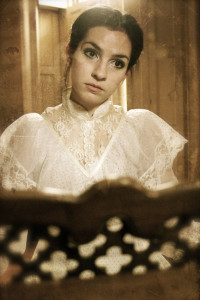
Susan: Going back to what I said about showing different ways people can be characters, that’s why I like Virginia’s character so much. We had so many different ideas for her, all of which were mostly stripped away by the end. She doesn’t actually speak until halfway through the show.
Glenn: Virginia actually ended up the most different of all the characters from where she started in my mind. I know I wanted her to die and come back and change each time. And I had all these other ideas. And I knew I wanted her to communicate at the séance somehow. Those two ideas I just mentioned are the only two that made it through. The actual mechanics, the whole two hours of her movement came out of the devising process.
Susan: Sometime recently I was watching one of the scenes and I could not remember how it got devised. It was one of those moments where I was questioning, “where did this come from? What did this come out of?” I couldn’t remember. In retrospect we have this whole moving machine and some of it I remember very distinctly being there for, taking the ideas from the actors and working through it until we turned it into a scene. And then some of it I have no idea how it came to be but here we are.
What has taking on this project, both initially and with this remount, taught you guys about yourselves as directors?
Susan: Do you want to go first with that?
Glenn: I’ve never directed a theatre piece before. I come at this from video and haunted attractions. I design spaces that characters can inhabit. I don’t have much theatre experience at all. That’s one reason I had one and now have two Co-Directors. It was also essential because there are so many things happening at once logistically. I kept the Co-Director status on myself in addition to Producer because this was my baby. I had all these ideas and I knew I wanted to be an involved part of it and wanted it to happen in a certain way, but I knew I needed help to evoke performances out of performers. So I’ve learned a great deal.
Susan: I have learned a lot too. For a long time I have been interested in the relationship between audience and actor. When I was in graduate school at Towson, I’d been asking a lot of those type questions in a lot of different ways. But this is definitely the biggest immersive interactive thing that I’ve ever worked on. For me, I think I learned a lot about simplicity and clarity. How much can be communicated by an actor without doing too much? That has been really profound to watch that process. To learn that as a director and then to see the actors go through that process, to see what it means to have this very complicated idea but you only have this very small moment to communicate it— it’s profound. What is the best physical way to communicate this very complex thing in this very simple way? It’s taught me a lot about the physical language of storytelling. There are so many levels of storytelling going on in any play, but especially in this show. We don’t have one script, we don’t have a script period. Some characters only have a few lines. What story are you telling through your own body and your relationship to space and other actors and your relationship to audience? It’s taught me a lot about that.
Glenn: In working with Michele, and we should mention Michele a lot more, but she was one of the first people I had talked to about this. She was talking to me about the whole environmental theatre approach that she has and I knew it just sounded perfect for what we were trying to achieve. As I researched it more, it turns out that Richard Schechner, who was basically the mentor of that process—
Susan: He coined the term environmental theatre.
Glenn: He has also inspired a lot of the new wave of immersive theatre like Punchdrunk. It’s really interesting to me to feel like we’re part of that movement. Our performers, none of them had seen anything immersive before we developed the show. We took a road trip to go see Sleep No More together a few weeks into the first run. I think that made the performers feel like they are part of that movement, knowing they were coming back to Baltimore to create something like that— on a smaller budget— in their current city. What we’ve done is so very different from that production as well. What they have is mostly a dance piece with a couple of actors on the fringes. It’s wonderful modern dance and a story told through dance but it’s so very different from what we’re doing. I think our performers can be can be really proud of what we’re doing. There were just so many ways that this could have gone wrong. It’s amazing that it works at all. Most of the time I’m just thinking “This is amazing that this works at all for anybody.”
Susan: Going back to being part of this movement, Richard Schechner helped start The Wooster Group that experimental theatre group of the 60’s and 70’s in New York. I think it’s nice to see those ideas really coming back in full of what it means to live inside of a play for the time that you’re with it. It’s nice that that’s becoming a little more mainstream and that younger audiences are really enjoying that. They are feeling invited into the world of the play. Something that we were very focused on the first time and this time is the sense of intimacy. I make the distinction that you’re not talking at the audience you’re speaking with them. They are your scene partner in this. This is not a character talking to an audience, this is a person talking to another person.
Glenn: That is counterintuitive for a lot of performers. We had to strip away some of that performative mode to make this work. You have to be a more humble with what you’re doing.
Susan: What we’re asking them to do is extraordinarily difficult. We’re asking them to have the tools of the actor, we’re asking them to throw their voice out into space so that they can be heard, we’re asking them to be clear and distinct with all of their movements so that their stories are being told clearly, but we’re also asking them to be very intimate and very personable with the audience. Everything has to be very subtle but not in a performative way.
Glenn: And they never, ever get to leave character. Some of them for over two hours never get to leave character.
Susan: It’s intense. Some of them have that for two and a half hours because of preshow.
Glenn: As crazy as the rehearsal process was, I’m going to miss those times where there was just five of us wandering through the space during a run. There they would be in their rooms in the middle of doing something, and you could just uniquely walk in on somebody with no audience.
Susan: I hope however long this goes on, and however long that our original actors stay with us— sadly one has already moved across the country— I hope they have gotten something out of this process that they can take onto other stages and different projects. This has been a learning process. I hope they have gotten something about acting that can lead them onto bigger and better things. I’m hoping that this project sets them along a good path of acting.
Glenn: I hope whatever we do next we can hook some of these very talented actors along to our next project.
What is it that you are hoping audiences will take away from this experience?
Glenn: I just want to make people think about a lot of different things. I want to make people think about their relationship with art, their relationship with performance. I want them to think about Poe and fiction and history and how they can be mixed together. Art and history, you don’t really have to choose between the two you can present both together. I think there is a lot of learning opportunities we get to exploit with this work. I wanted to create experiences that will stick with people for a very long time. Not everyone is going to get that, but the ones that do I’m very happy to hear about because that is something that you just don’t get from a lot of entertainment.
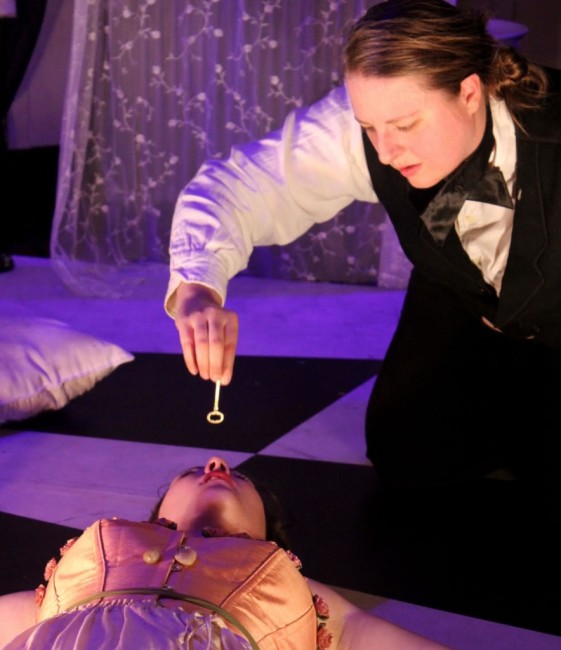
Susan: Depending on who’s seeing it? I think different things for different audiences. With students I have a passion for education of theatre, not just hoping that they go see theatre, but I want to make sure theatre students go see lots of different types of theatre. I definitely hope that we have theatre students come see it so that they can see this type of theatre so that during their education of it they have in their toolbox this sense that theatre isn’t just one type of thing. For a regular audience member just coming into the show to see it, I’m not sure what exactly I want them to take away. But I think it is a good opportunity in our digital age to disconnect. We ask people to put their phones away for two hours and they are having a very intimate experience with a very small group of people for that time in a very heightened environment. We’re asking them not to speak unless spoken to and we’re encouraging them to be curious and explore what they want to explore. I’m hoping that it gives their brain a little space to allow this experience to be absorbed.
We’ve had people have very profound experiences. Not to say that everyone will come and their life will be changed, that’s pretentious. But just in witnessing what these audience members go through— some loved it, and they take it away and things stick with them and that’s great, but then there are people that go through these very profound experiences for certain moments in the show. It’s our job to create the space for that.
Glenn: It’s an environment. It’s a place to be as much as it is a show. We’ve had people come back— I think four times is the highest— but we’ve had people come repeatedly and I hope that continues to happen.
Susan: There is this idea of letting go, for the actors, they have to let go of this idea of “needing to be beautiful.” We’re in this situation where there is a lot of lush imagery, beautiful costumes and beautiful sets. In a performance way there is this actor instinct to want to create something beautiful. There is a lot of process of letting go of that because their job isn’t to be beautiful. Their job is to create a space for an audience to find beauty within that. In order to do that they are usually not beautiful, they have to express something that is not beautiful. It’s about creating that space, not just that physical space but an emotional space so that an audience can find space for themselves.
Why should people come and see The Mesmeric Revelations! of Edgar Allan Poe?
Glenn: We think it’s very, very special. It’s different. I knew it would be different going in. It has a lot of heart. Everyone has put a lot into it. For all of our various creative disagreements that you have in this sort of process, it’s a fairly contiguous world that now 16 people are somehow making happen. Somehow we have created this place that can be experienced repeatedly but you can still see and discover new things each time. It’s definitely a finite thing that not many people are going to get to experience.
Susan: I want people to come see our actors because I love our actors and I am so proud of them.
Glenn: They’re just so good.
Susan: I want them to be able to show off all of the hard work that they have done. They have put so much heart into this and so much of themselves, it’s just wonderful to watch.
The Mesmeric Revelations! of Edgar Allan Poe plays through December 20, 2015 in the historic Enoch Pratt House of Baltimore through the Maryland Historical Society— 201 W. Monument Street in Baltimore, MD. Tickets are going fast and several dates are already filled to capacity. Tickets must be purchased in advance online.
Click here to read the review for The Mesmeric Revelations! of Edgar Allan Poe.

